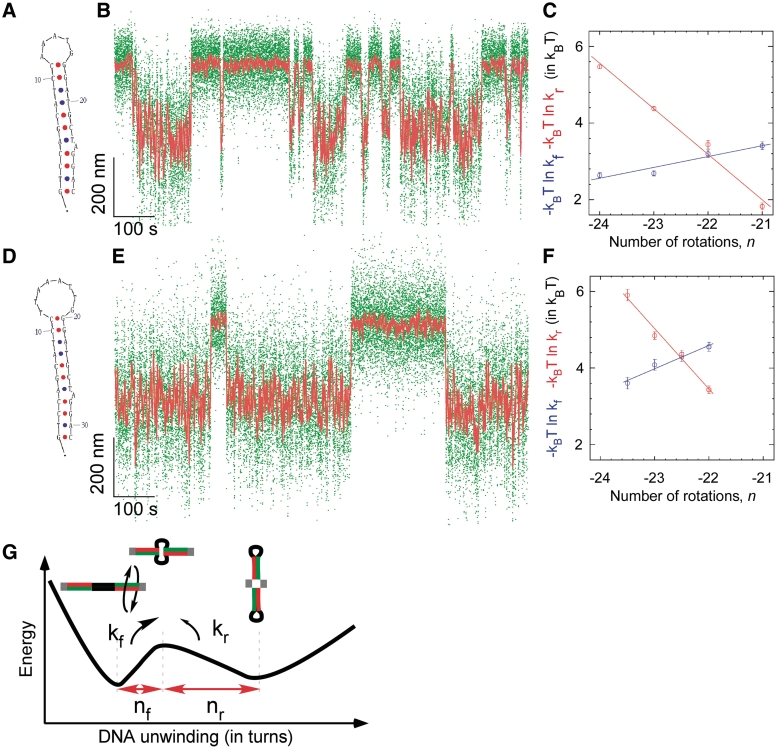Figure 5.
Kinetic and structural analysis of cruciform extrusion in mutColE1 inverted repeats bearing (A–C) a 5 base loop or (D–F) an 8 base loop. (A) The mutColE1-5b inverted repeat is seen (B) to extrude reversibly as shown previously in Figure 4. (C) The free energy barrier to cruciform rewinding (red) is more sensitive to torque than the free energy barrier to cruciform extrusion (blue), d ln kf/d ln kr = 4.2 ± 0.6. (D) The mutColE1-8b inverted repeat with an 8 base loop is seen (E) to extrude with slower kinetics than the 5-base loop. (F) The free energy barrier to rewinding is still more sensitive to torque than the free energy barrier to extrusion, but less so: d ln kf/d ln kr = 2.6 ± 0.5. (G) Two-state model for torque-induced cruciform extrusion. The transition-state intermediate to cruciform extrusion is formed by unwinding B-DNA by nf turns, and for complete formation of the cruciform the B-DNA must thereafter be unwound by an additional nr turns, with nf + nr = ncruciform. The relative sensitivity of transition rates kf and kr to supercoiling predicts the position of the transition state between the two states, d ln kf/d ln kr = nf/nr.

